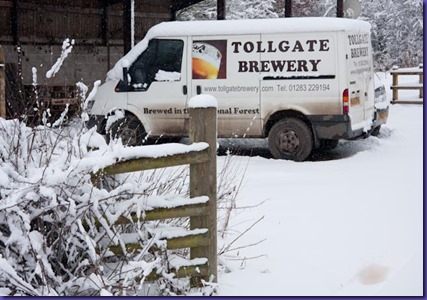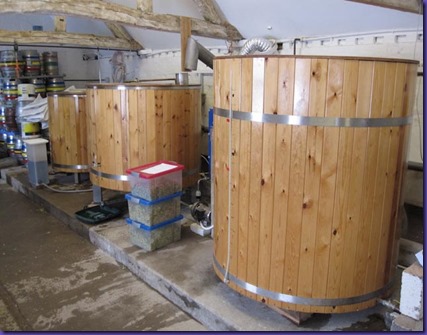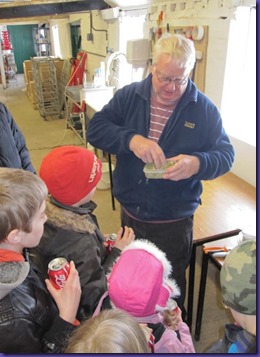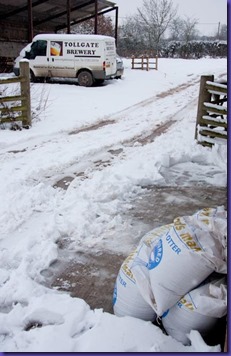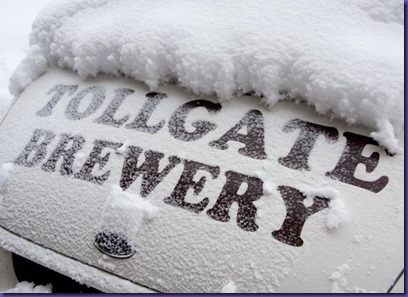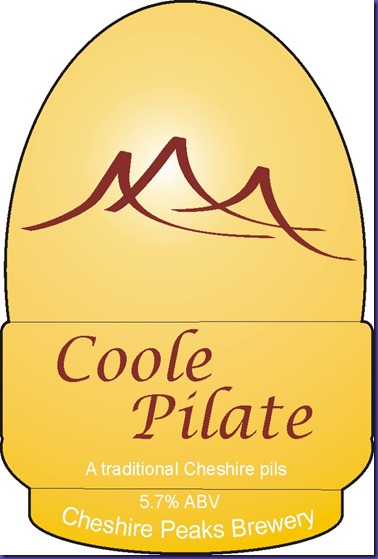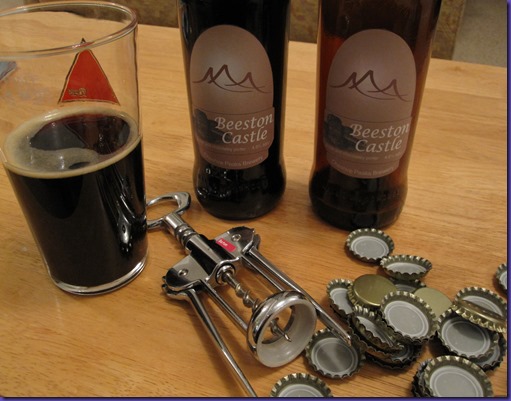Last weekend we had a fantastic weekend away with friends at Calke Abbey in South Derbyshire. The National Trust has a property on the estate called Southwood House Farm which is available for rent (sleeps 14). (As an aside this is a lovely property, highly recommended).
The Trust has been keen to see some of the old farm out-buildings put to use, and recently Tollgate Brewery has relocated from an nearby industrial unit to this more picturesque setting. Brewers Quentin and Pat welcome visitors to the house, and were kind enough to give us a tour of the brewery. In fact, if you remember, last weekend was very snowy – we had at least six inches over the weekend, which pretty much snowed us in. So we were faced with a weekend of snowball fights, good food and of course an unlimited supply of beer! What a hardship!
(One more aside: it was not ME that chose this property. The fact that there was a brewery one site was merely a piece of good luck as far as I was concerned! :-)
Tollgate is a six barrel plant, so pretty similar in size to a lot of UK craft breweries. They have a range of about eight beers which are mainly sold in casks to local pubs, but are also bottled and sold locally, such as in the National Trust shop and at farmers markets. Quentin also has another full time job, so they only brew at the weekend (must be a busy life!).
For a business perspective, I was interested how Quentin and Pat came into brewing. They purchased the brewery relatively recently (in the last couple of years), and at the time neither of them had any experience in brewing. So essentially they wanted to run a business first, and the fact that it is a brewery came second. As a passionate homebrewer this interests me, because obviously I would come to it from the other direction: as a brewer first and businessman second. Having said that, you might argue that brewing skills are easier to learn than business skills, so starting with business skills first might actually result in a better run business.
Anyway, the tour was great – Quentin was very good with the kids, and the beer was excellent too. Can’t think of a better place to have got snowed in!
